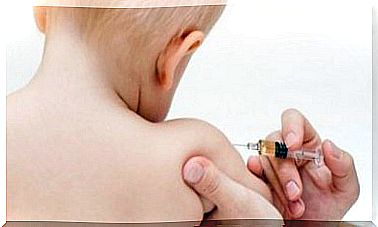Breast Milk Fats: 3 Facts – I’m A Mom

The different fats in breast milk have other functions besides nutrition. Milk is a living and changeable tissue and as such its composition is not uniform. Thus, the amount of its components varies throughout the day and between one feeding and another. Also, it gradually changes as the baby ages.
Although the maternal diet is not a determining factor for these changes, some nutrients can be affected by the mother’s food choices.
In general, the composition of the mother’s milk is specifically adapted to the baby’s developmental needs. This is true at every stage of growth, including the needs of premature babies.
The energy content of breast milk is mainly obtained from two components. The first is lactose, the most abundant component of the entire milk content. But, on the other hand, there are also breast milk fats.
It is interesting to remember that, along with milk fats, fat-soluble molecules are also transmitted. For example, vitamins A, D, E, K and other carotenoids. Today, let’s talk about three interesting facts related to these fats.

1. Breast milk fats are dispensed as an emulsion
Milk is an emulsion with fat particles, known as fat globules, dispersed in an aqueous medium (whey). Fat globules are produced by cells in the breast epithelium. They have different sizes, with a diameter ranging from 0.1 to 10 microns.
As for their composition, they contain substances specific to the breast epithelial cell. They are known to be largely filled with triglycerides. But their main feature is that they are covered by a unique structured membrane known as the milk fat globule membrane.
Why is this membrane important?
It is very interesting to know that this membrane has three phospholipid layers, when in the rest of the body there are only two. Thanks to this unique membrane architecture, the fat globules do not bind to each other and the fat particles remain dispersed from the aqueous phase.
Furthermore, the structure and composition of this membrane allows it to transport lipids with metabolic importance, such as sphingomyelin and gangliosides.
At the same time, the milk fat globule membrane is a source of many other bioactive compounds. Among them are glycolipids, glycoproteins and carbohydrates, which have important functions for the brain, intestine and immune system.
2. Fat globules in breast milk affect the development of intelligence
Lipid components of the fat globule membrane, such as sphingomyelin and gangliosides, are highly concentrated in the brain. They are known to be involved in the formation of connections (synapses) between neurons and in the formation of myelin.
Myelin is important because it acts as an insulator of axons, thus resulting in more efficient transmission of nerve impulses. Myelination is a process that accounts for a large part of brain growth during late pregnancy and the first two years of life. But it is also known that this process can continue until between 5 and 10 years of age.

There are reports of many clinical trials in populations of children ranging from preterm infants to preschool children that demonstrate that dietary supplementation with milk fat globule membrane improves cognitive process and behavior.
3. The fat globules in breast milk strengthen the immune system and promote intestinal health
Studies carried out in animal models have shown that gangliosides strengthen the immune system. In addition, other components carried by fat globules also affect the immune response. Such components include different proteins such as lactadherin, mucin-1 and butyrophyllin.
Each of them influences the immune system through several mechanisms. For example, they can interfere with the adhesion of pathogenic microbes to the intestinal epithelium. Others have a bactericidal action and can even act to benefit the development of the intestinal microbiota.








